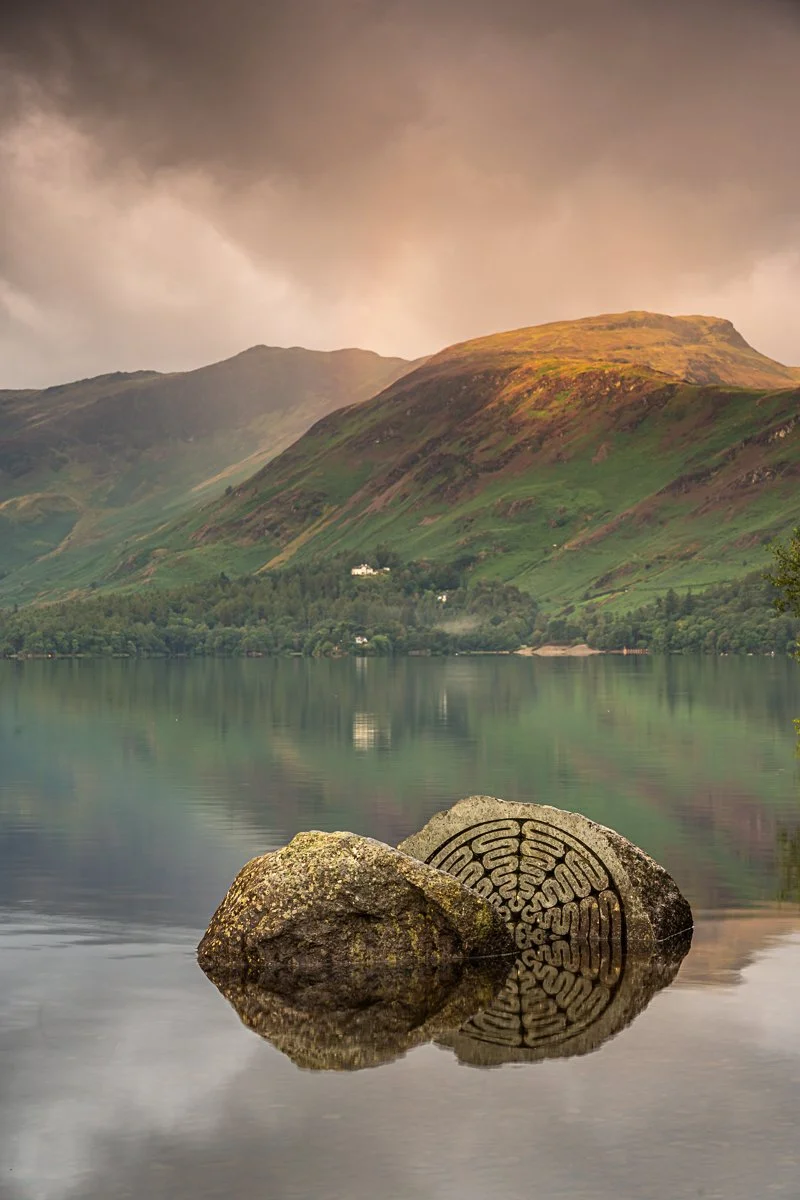Capturing Rainbows
I didn’t go out specifically to photograph a rainbow; to be honest, it wasn’t even on my mind as a possibility at that moment. This was somewhat surprising, considering I had just driven for about 20 minutes through a steady rain shower! My main aim that morning was simply to spend a couple of hours getting familiar with my new camera and lenses. Opportunities to get any meaningful ‘camera time’ had been few and far between lately, and with a 16-night trip to the Highlands and Islands of Scotland coming up very soon, I really wanted to avoid doing all my ‘practising’ while there. I was on a clear mission focused solely on honing my skills, and rainbows definitely weren’t part of the plan.
After a brief and uninspiring stop at the newly renovated Ashness Jetty, I decided to take a closer look at the Centenary Stones at Calfclose Bay. Two previous visits had left me feeling disappointed, as water levels over the last few months had been significantly depleted, leaving the stones stranded dry and exposed on the rocky shore. However, we had recently experienced some quite substantial downpours, and I was hopeful that the stones would once again be partially submerged in water, allowing me to practise some long exposure photography.
So, that was my aim – to capture a striking long exposure image by using my NiSi 6 stop ND filter, featuring the Centenary Stones prominently in the foreground with the distant fells at the south end of Derwent Water providing a majestic backdrop.
When I arrived at the stones, I was prepared, carrying a brolly to shield my camera equipment in case of further light rain showers. Rainbows were not on my mind at that point, though the location itself was looking very promising. To my relief, the stones were about half submerged in water, and the surface of the lake was remarkably still, creating beautiful reflections. Even the midges, which had bothered me on my only other recent visit, seemed to be behaving themselves this time. My plan appeared to be coming together perfectly, so I got myself set up carefully. I took a test exposure to confirm the composition and then placed my filters in position for the long exposure shot. As the exposure began, I looked up to take in my surroundings—and that’s when I saw it! The most beautiful and vibrant rainbow arched gracefully above Manesty Park and Black Crag, adding an unexpected and magical element to the scene.
Anyone who has ever taken a photograph will understand the feelings I experienced at that precise moment. Fortunately, luck was definitely on my side that day. I patiently allowed the 25-second exposure to finish—which, honestly, felt much longer than it actually was—and then carefully removed my 6-stop ND filter. To my delight, the rainbow was still there, vivid and bright. I repositioned my tripod to perfectly line up the stones with the west side of the lake, and, to my relief, the rainbow remained. Next, I adjusted my NiSi 3-stop medium graduated filter to compensate for the height of the fells on that side of the lake and made my exposure. However, imagine my despair when, upon reviewing the image, the rainbow was barely visible at all! I looked up in confusion. There it was, just as clear and stunning as before. After a brief moment of head scratching and furrowed brows, it finally dawned on me: it was the polariser.
The colours of a rainbow can indeed be made more intense, and rain clouds darkened, by using a polariser. But since polarisers work on reflected light—and a rainbow itself is created by light reflections off countless water droplets—the polariser can also cause the rainbow to disappear completely! The beauty of the NiSi filter system I use is that the polariser sits in front of the lens on a geared adapter ring, meaning it remains in place for most of the time I’m out shooting. I only need to turn the gear wheel to rotate the polariser in or out of use when necessary.
With a quick turn of the gear wheel, a minor adjustment to the exposure time, and a hopeful heart, the rainbow instantly appeared on my screen once more. I had got the shot I wanted: my perfect rainbow. But I wasn’t finished yet—I told myself I could do better. Wouldn’t it look amazing if I could capture the rainbow’s reflection passing right through the Centenary Stone? The pot of gold at the end of the rainbow, so to speak. Maybe that was a bit of wishful thinking, but it was certainly worth a try. The rainbow was still there, vibrant as ever, so I raised my tripod, fine-tuned my composition one last time, checked the exposure settings carefully, and made that final, decisive shot. As I looked again at the scene before me, the rainbow slowly started to fade away, and I breathed 🙂


